Brillance bleue
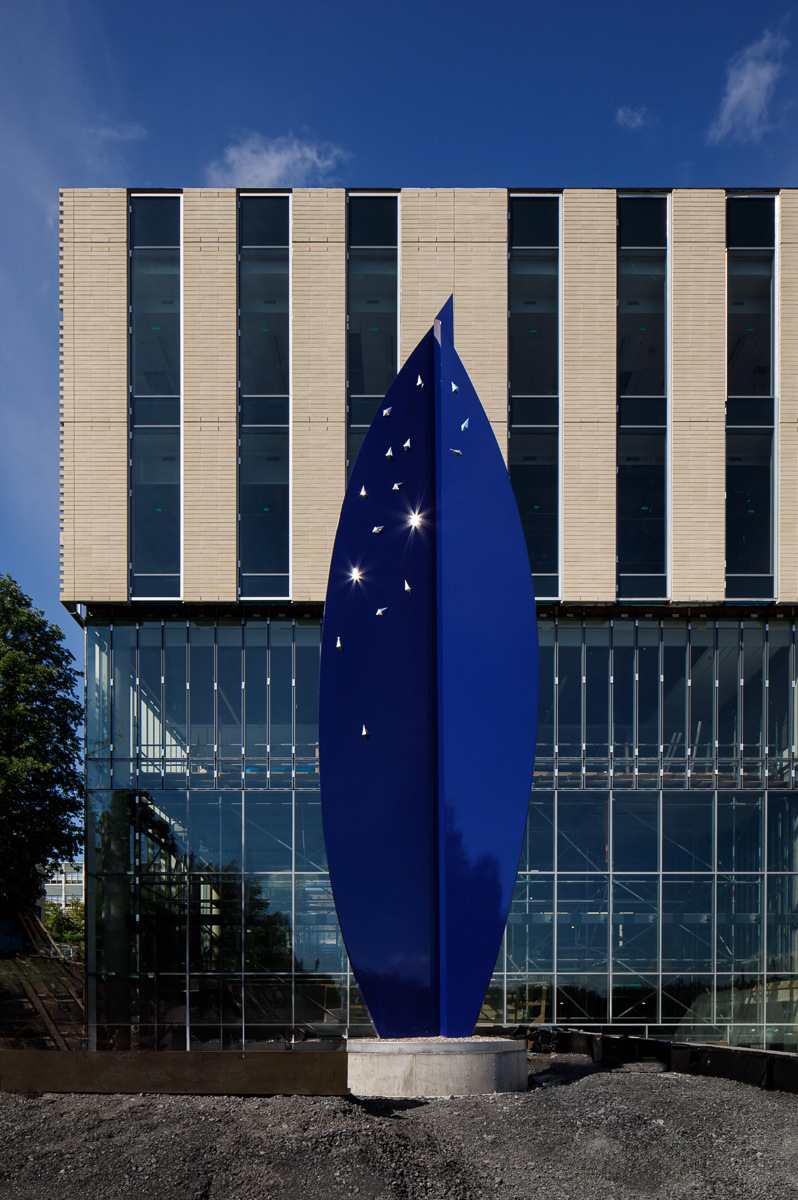
Hydrosphères
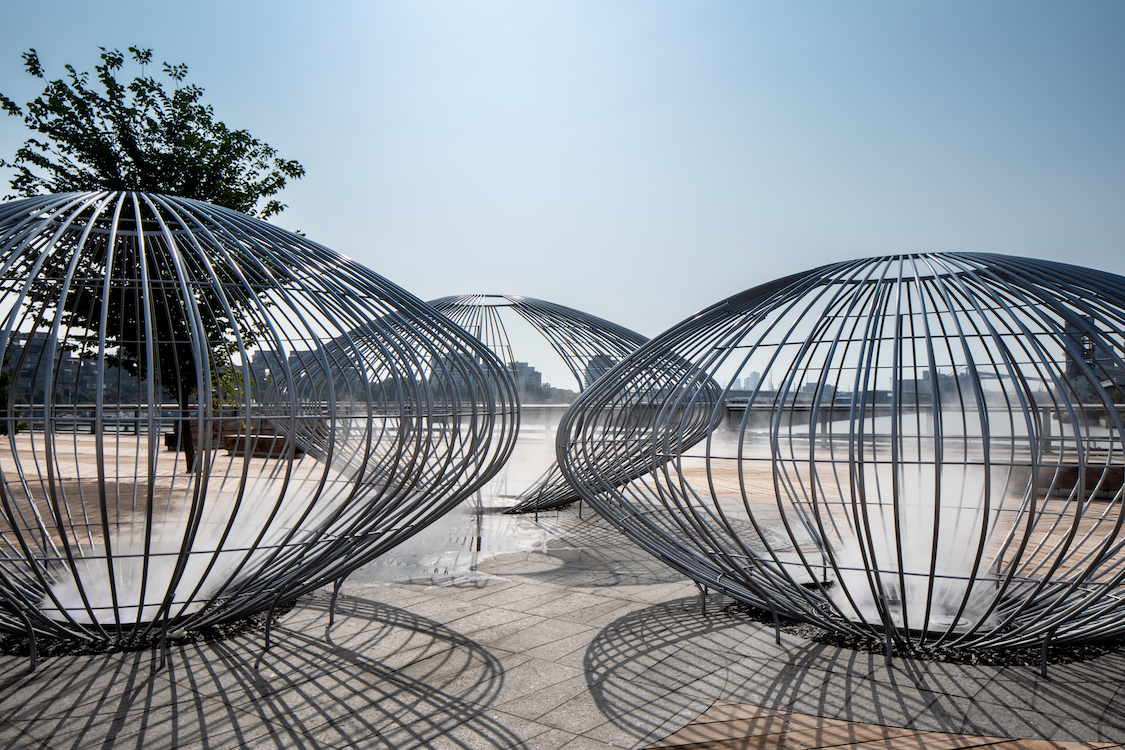
Autoportraits

Raindrops
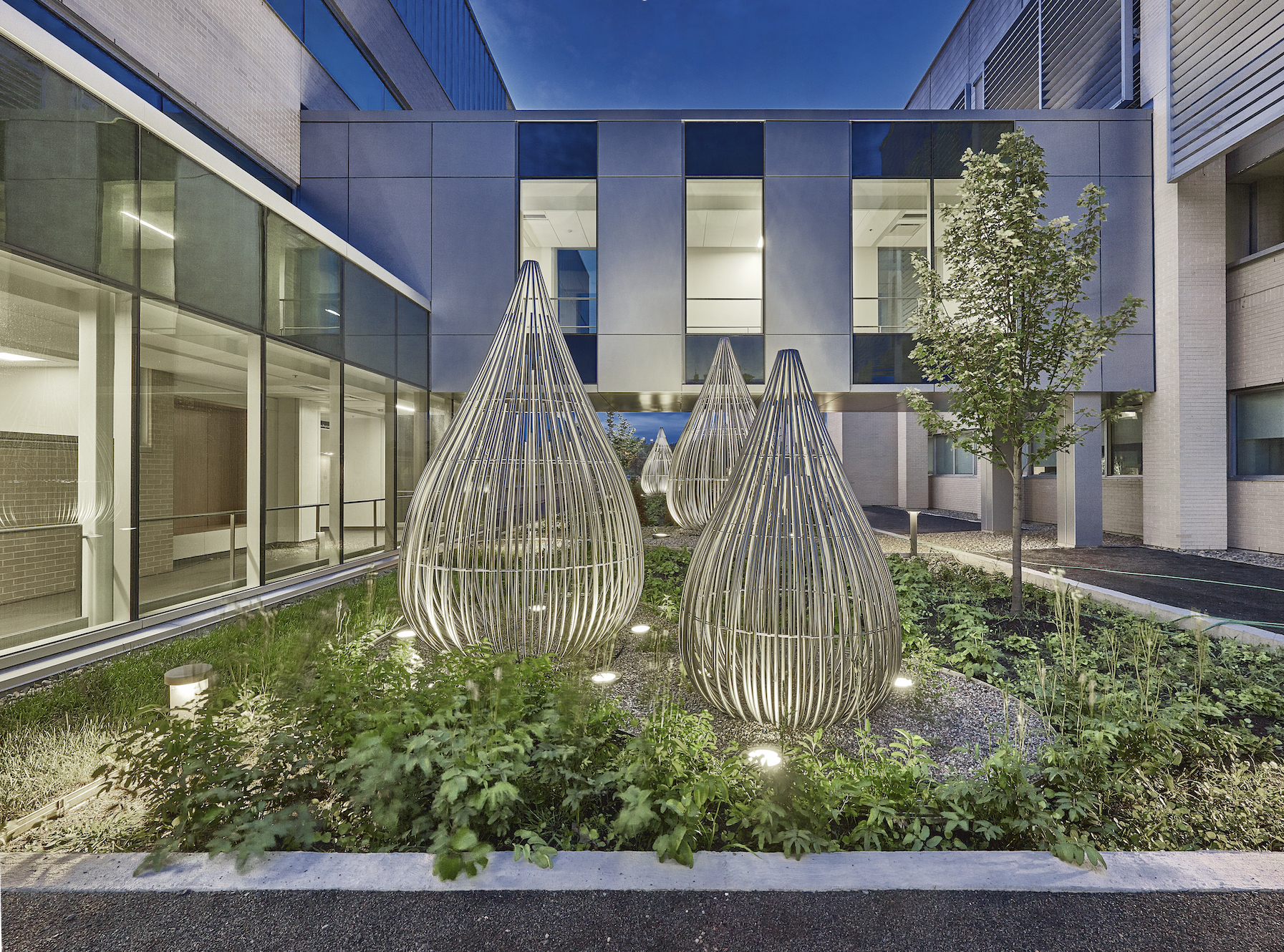
Lord Stanley’s Gift

Havre

Light Containers

Light Container (wood)

Rose Wall

Saule tortueux / Pin nordique

Give Peace A Chance

Tracings

Chugach Garden of Light

Stripe, Circle, Spiral and Branching Rooms

Jardin / Forêt

Les graminées du jardin Saint-Sulpice

Field of Winds

Willow/Light

Storehouse of Names

Tower of Bowls

Circle of Words, Garden of Thought

72 Bowls for Fuji

La cloche aphone

Theatre for Sky Blocks

Cæsura

Sekibutsu-gun

News
New public art commission
October 2023
Brillance Bleue
Collège de Maisonneuve, Montreal, Quebec
Installation summer 2024
Hydrosphères – Grand Quai – TOP 100
The 2023 CODAawards jury has selected this year’s TOP 100 finalists. 411 projects from around the world were submitted to the awards, which recognize design projects demonstrating the most successful integration of commissioned art into an interior, architectural, or public space.
L’Art Public Contemporain – Toute une histoire (1970-2020)
Published by Editions Art-Public, December 2022
by Hervé-Armand Bechy
Since 1976, Hervé-Armand Bechy has been one of the main actors and facilitators of the debate on public art at the international level. He is simultaneously engaged in theoretical reflection and commitment in the field .
Give Peace a Chance is included in this book, pages 269-270.
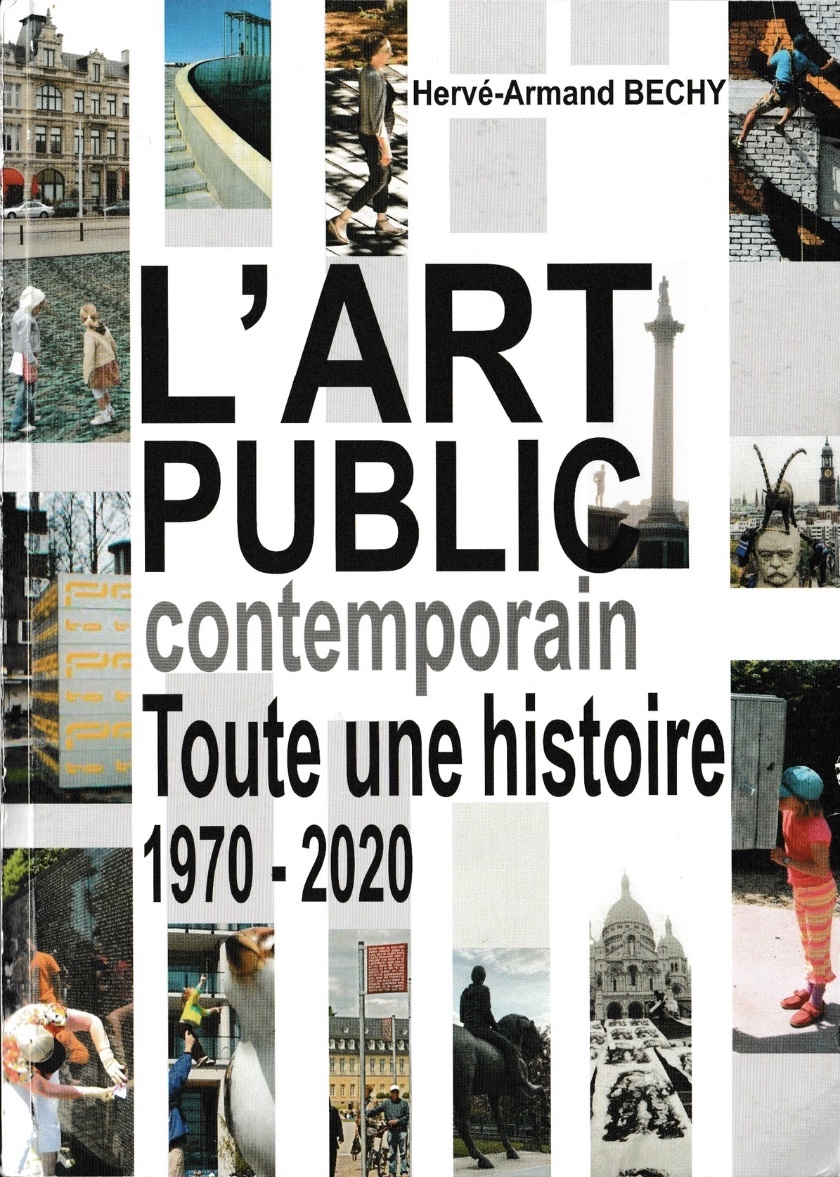
Grands prix de design – 15th edition, October 2022
Bouquets, Nun’s Island, Québec. Jardin de sculptures Evolo X
Landscape architect : RobitailleCurtis
Discipline: Landscape& Territories: Grand winner
Categories: Special Awards / Landscape + Art Integration : Platinum Winner, Gold Certification
Categories: Landscape Architecture/Landscape Architecture – Housing Project: Gold Certification, Platinum Winner
“Designed to showcase the sculptures of the celebrated artists Linda Covit and the natural ecosystems of the Laurentian Valley, the forecourt of the Evolo X tower welcomes residents and visitors to this prestigious address with contemporary elegance and flair.”
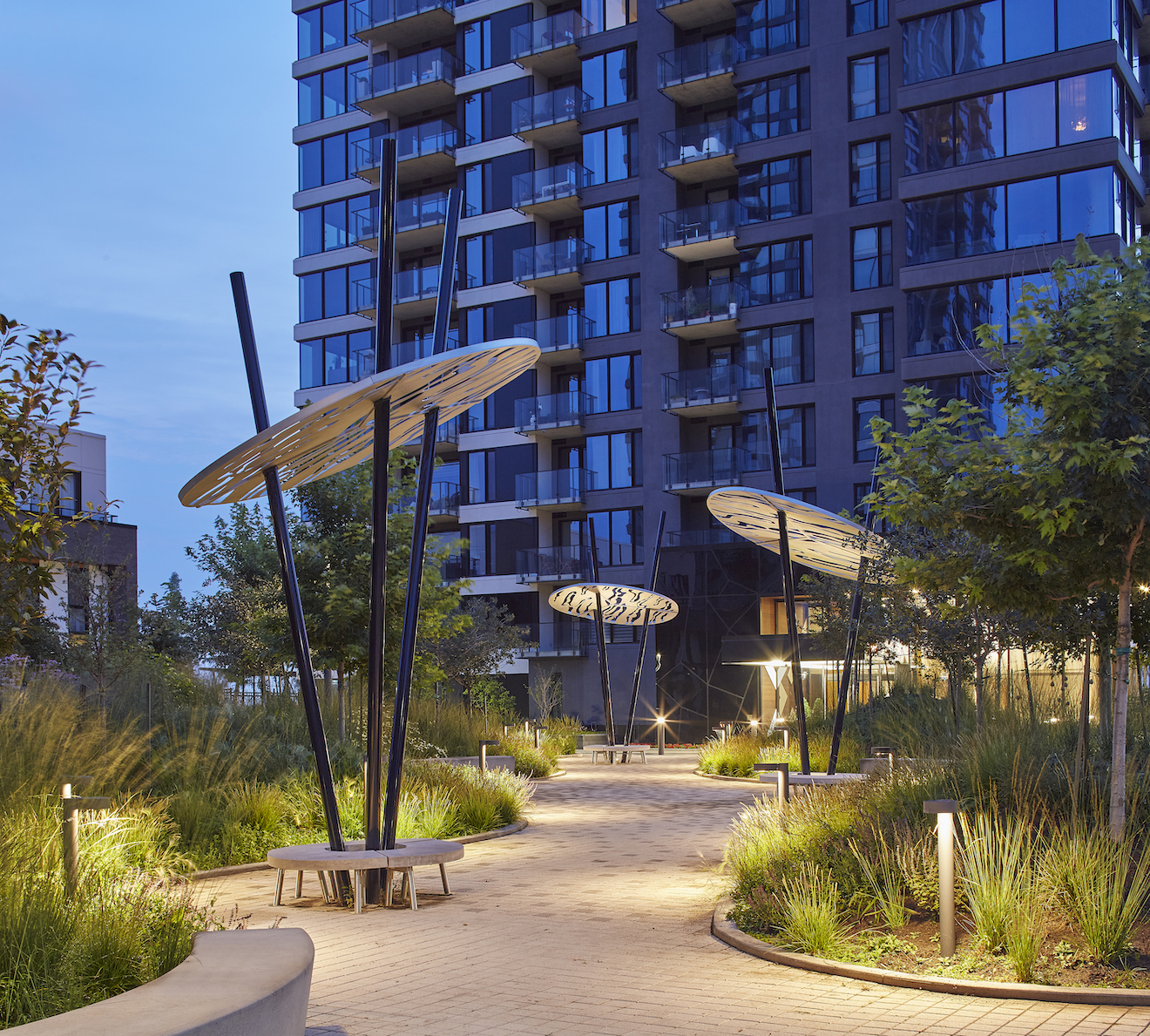
New public art commission
Where the River is Bordered by White Pines
September 2022
The sculpture refers to the poetic provenance of the name Coaticook. Of Abanaki origins, the town’s name is derived from “koatikeku” – “where the river is bordered by white pines”
Maison des aînés, Coaticook
Installation August 2023
CODAawards 2022
August 31, 2022
international Design Competition, Collaboration of Design + Art in Public Spaces
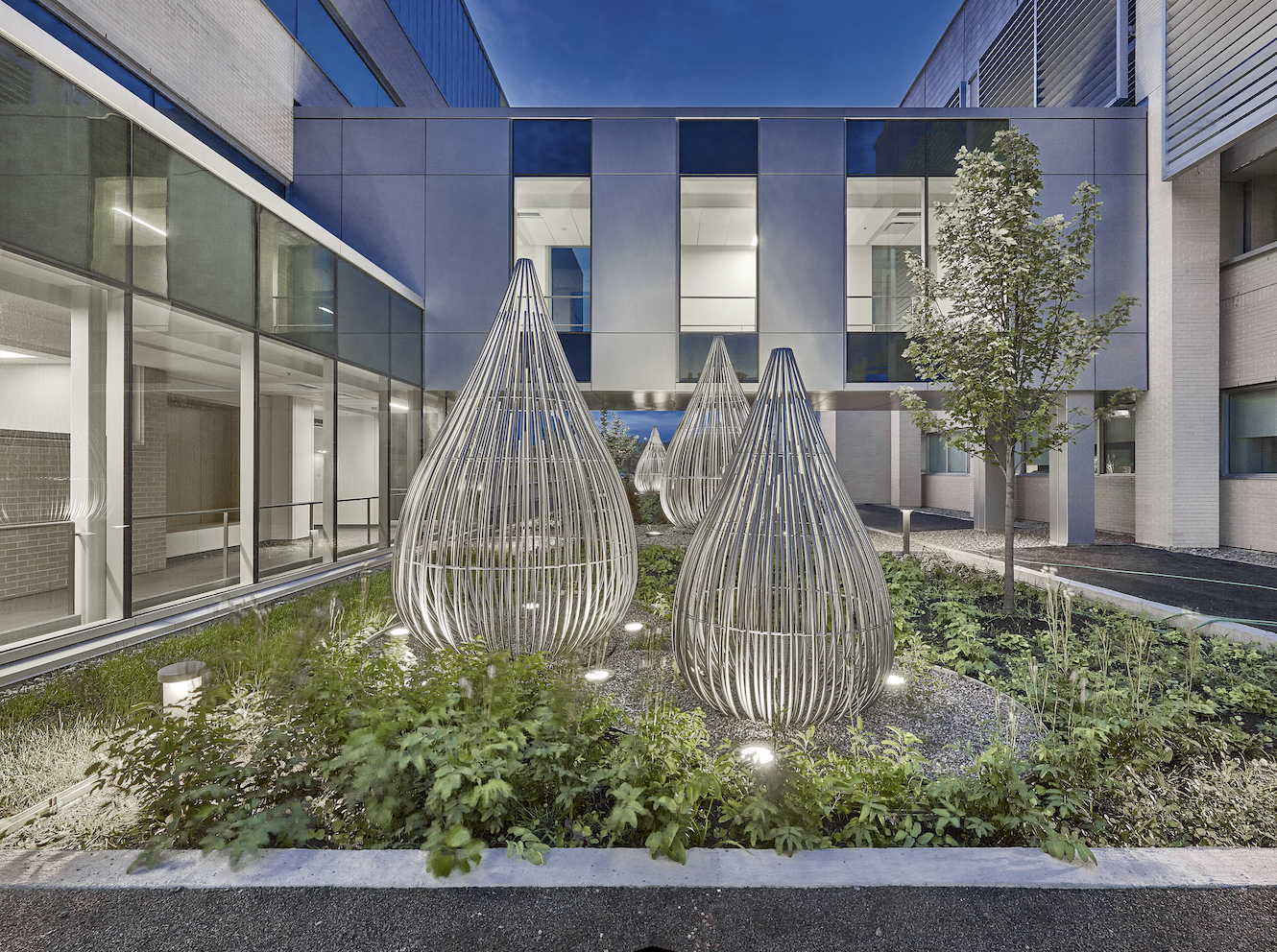
Inauguration of Autoportraits
Inauguration of Place des Réflexions and Linda Covit’s Autoportraits
ÉTS Executive Director François Gagnon, in the presence of Westmount-Saint-Louis MLA Jennifer Maccarone, is pleased to invite you to the inauguration of a new park and artwork by artist Linda Covit. Join us in celebrating culture and the revitalization of the outdoor site of the former Dow Planetarium; a new green space on the ÉTS campus.
When: Friday, September 24, 2021 at 10 a.m.
Where: Place des Réflexions (corner of Notre-Dame West and Peel)
The inauguration will be held outside, rain or shine.
R.S.V.P.: before September 20, 2021
Please note that you will be asked to provide your vaccination passport and photo ID.
will be required.
If you have any questions, please contact the Communications Department at communications@etsmtl.ca

OnArt Film Festival

August 7, 8:30 p.m. to 10:30 p.m.
The Closer You Look ■ The Author Photo: Beowulf Sheehan ■ The Legacy ■ Behind the Canvas ■ Yan Pei-Ming, from Ornans to Schanghai
Venue : MÓZG
Bydgoszcz, Poland
http://onart.eu
The short documentary on Lord Stanley’s Gift Monument (Ottawa, Canada) by Covit / Nguyen / NORR features images of this artwork in the public space, accompanied by commentary by the artist Linda Covit, Mona Hakim, Art Historian, Critic, Independent Curator and Jean-Yves Bastarache, Public Art Consultant. Context, design and historical relevance are explored in this powerful commemoration of one of Canada’s most cherished national emblems.
Directed and edited by Koa Padolsky
Production: Linda Covit
Cinematography: Philippe Lavalette cs
Linda Covit – Rosée
The second season of Art Massif is now online. Five new episodes, including “ Linda Covit – Rosée”
Honorary president
Honorary President
37th International Symposium of Contemporary Art of Baie-Saint-Paul
2019 edition,Sylvie Lacerte, Artistic Director – Art, Architecture, Landscape and Environment
July 26juil – August 25, 2019
Raindrops installed
Sculptural artwork Raindrops installed
Garden, Dialysis Pavillion
Maisonneuve-Rosemont Hospital (Montreal).
New public art commission ÉTS
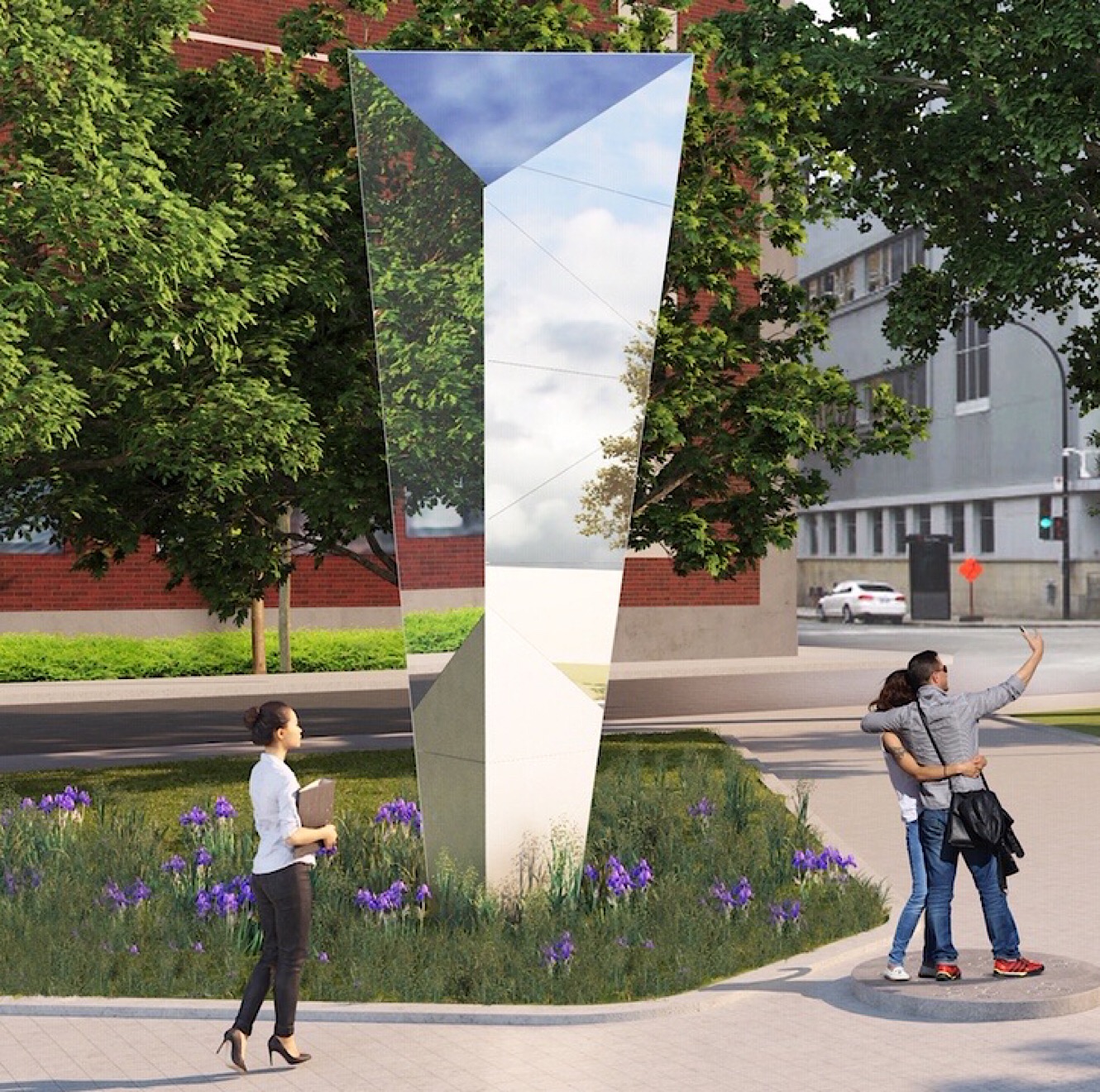
Landscape architects: NIP Paysage
Commissioned by : ÉTS (École de technologie supérieure)
Rendering: Plan HB
New public art commission – le Grand Quai
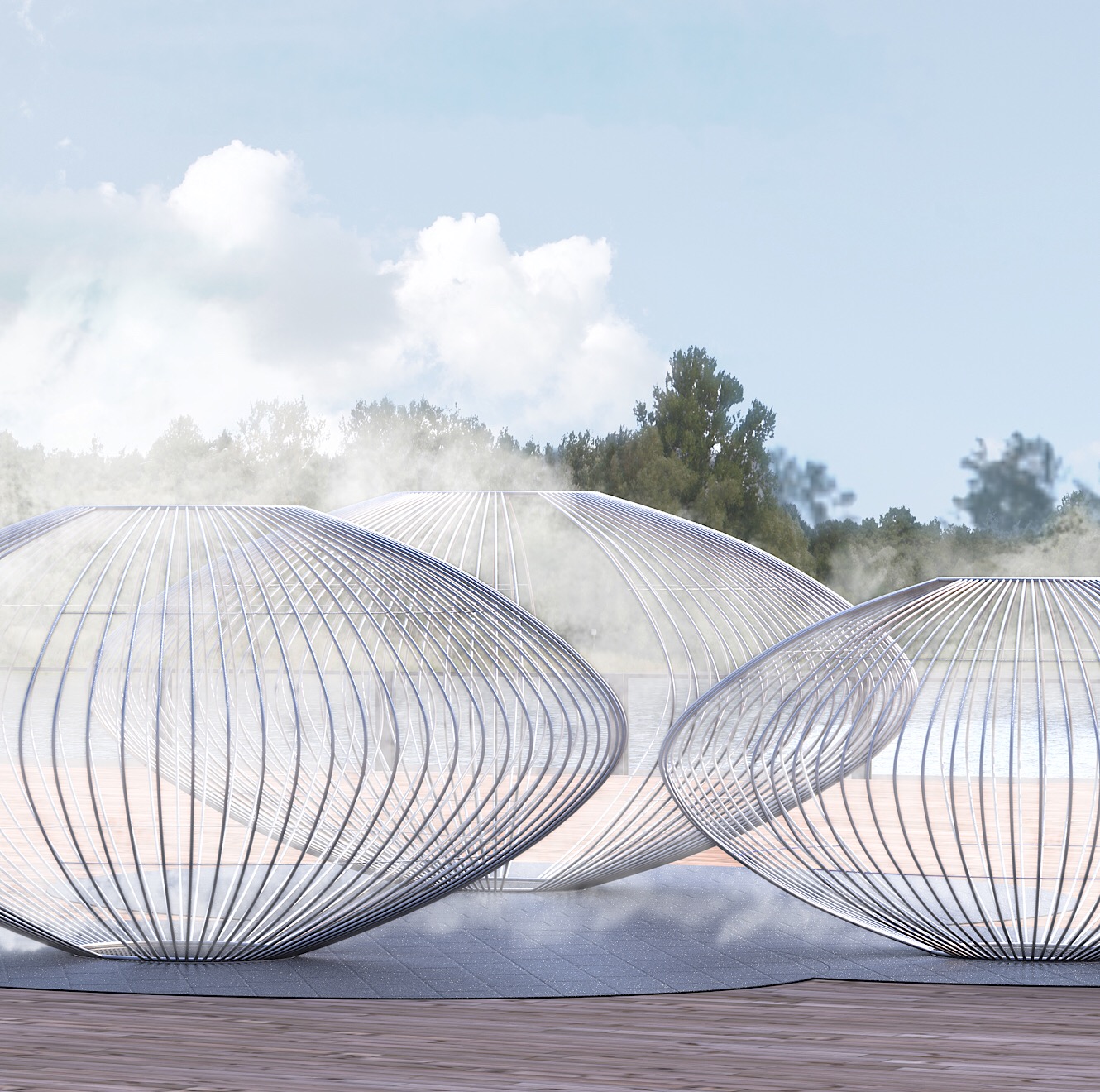
The artwork will be installed in 2021 on the Grand Quai in the Port of Montreal.
Architects : Provencher Roy
Commission : Montreal Port Authority
Rendering: Plan HB
FIFA
The film “LE LEGS” will have its world premiere screening at Montreal’s 37th edition of the International Festival of Films on Art (FIFA).
Saturday 23 March 2019 | 17h30 – Canadian Centre for Architecture – Théâtre Paul-Desmarais
Tuesday 26 March 2019 | 19h45 – Cinéma Cineplex Odeon Quartier Latin, Salle 12
Friday 29 March 2019 | 20h30 – Cinéma Cineplex Odeon Quartier Latin, Salle 10
The film on Lord Stanley’s Gift Monument (Ottawa) by Covit / Nguyen / NORR features captivating images of this artwork-monument in the public square, accompanied by commentary by the artist Linda Covit and two professionals from the art milieu. Context, design and historical relevance are explored in this powerful commemoration of one of Canada’s most cherished national emblems.
Directed and edited by Koa Padolsky

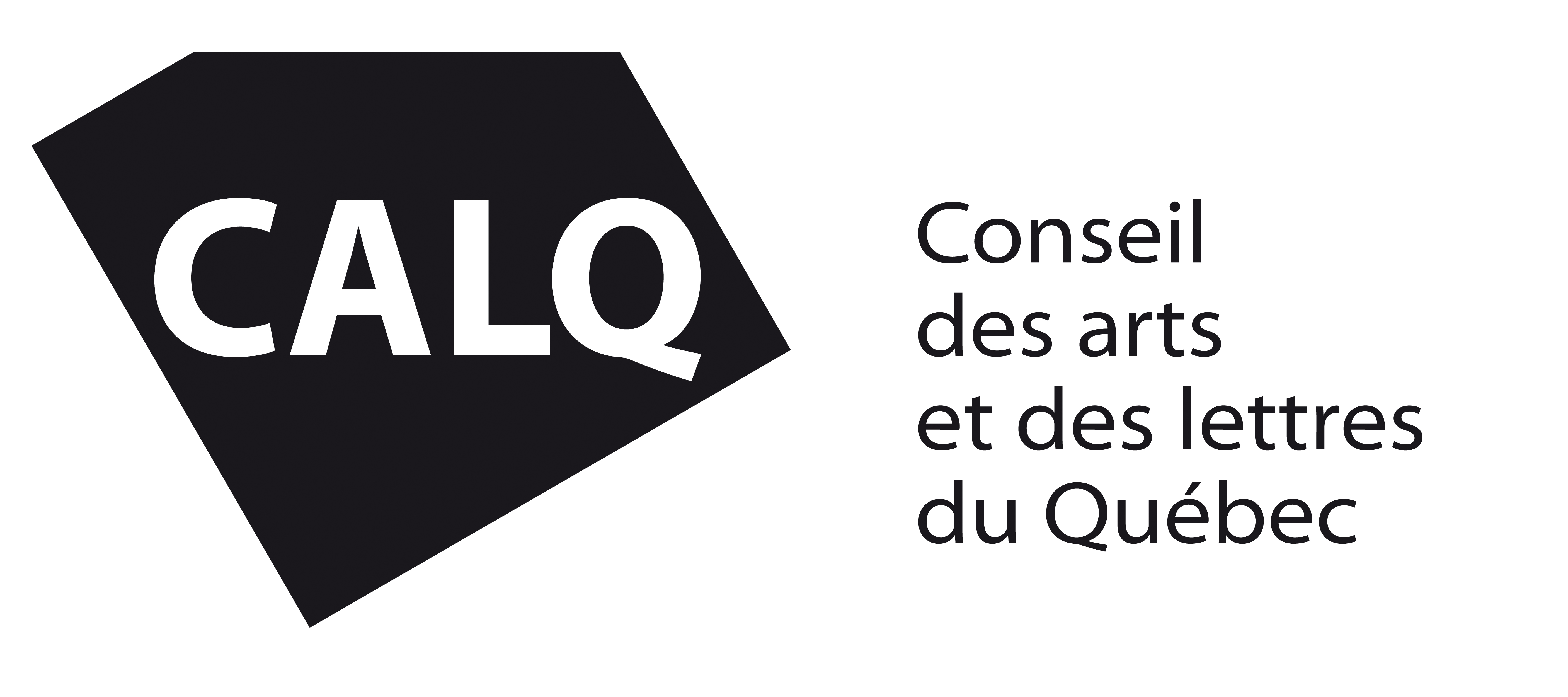
French/English with French subtitles
https://www.artfifa.com/en/movies/le-legs
Prize
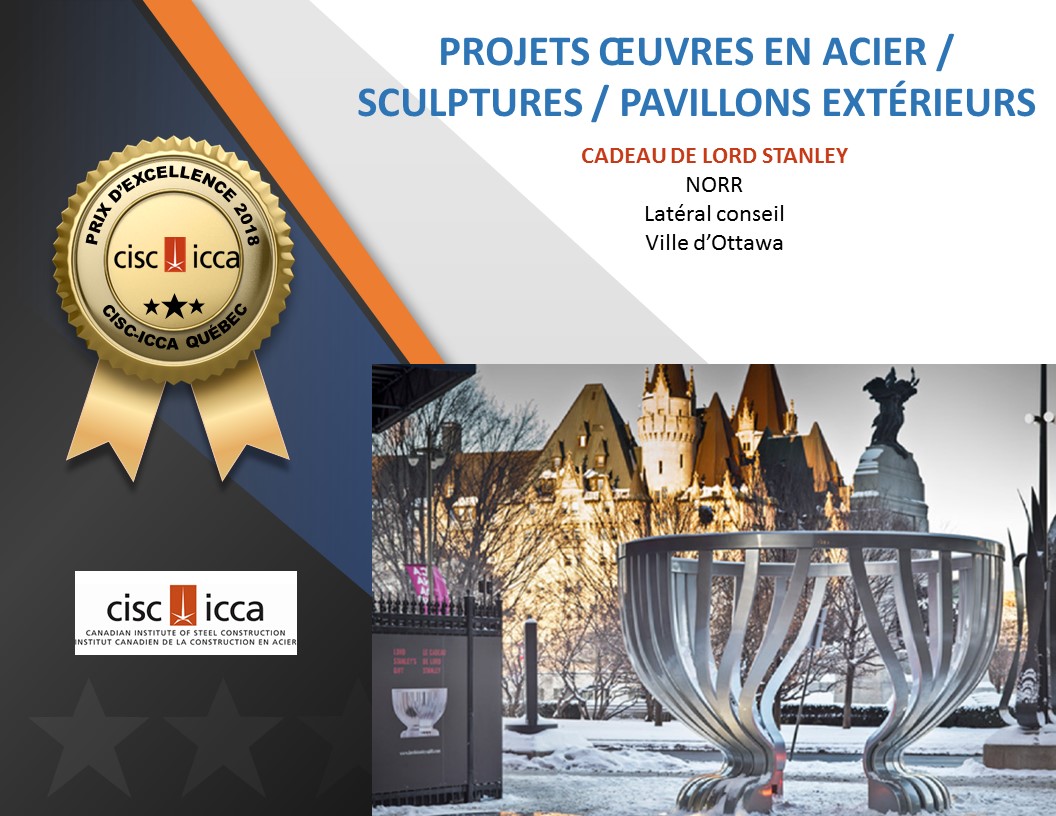
In Progress
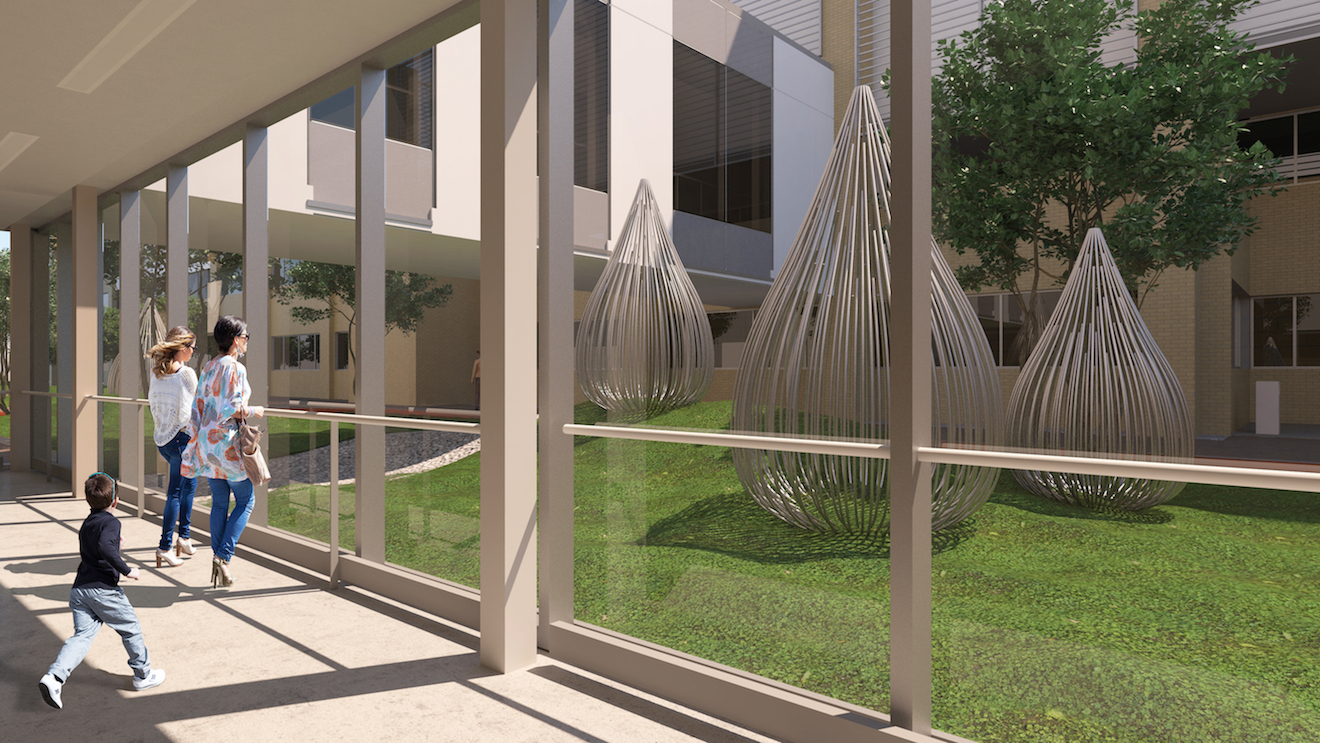
Lord Stanley’s Gift Monument Unveiled
Lord Stanley’s Gift Monument was unveiled with the release of hundreds of balloons October 28, 2017, at the corner of Sparks and Elgin in downtown Ottawa (Canada).
Video: Jean-Pierre Thonney
Photo: Andre Ringuette/Freestyle Photography/OSHC


About
Biography

Linda Covit lives and works in Montreal, Canada. After graduating with a B.Sc. from McGill University she became involved with Powerhouse Gallery, Montreal while developing her sculptural practice. Numerous trips to Japan photographing temples, gardens and contemporary architecture have been influential. Solo exhibitions include Plein sud, Centre d’exposition en art actuel à Longueuil; Expression, Centre d’exposition de Saint-Hyacinthe; le Musée de la Ville de Lachine; Musée national des beaux-arts du Québec; Toronto’s Koffler Gallery and Genereux Grunwald Gallery; the Canadian Embassy, Tokyo, Japan. She participated in group exhibitions in Japan’s Echigo-Tsumari Art Triennial 2003, the 53rd Museo internazionale delle ceramiche in Faenze, Italy, and Wave Hill N.Y.
Among her many public artworks are a gift from the Quebec government to Shandong Province, China; an installation on Montreal’s Mount Royal Park commemorating the 1969 Lennon-Ono bed-in, (Les Arts et la Ville Prix Aménagement 2012; CSLA Regional Merit Award 2012), an art wall with mist at Toronto’s Four Seasons Hotel and Residences (Toronto Urban Design Awards : Award of Merit 2015; CSLA Regional Merit Award 2014); four garden rooms in the Shangri La Botanical Gardens and Nature Center, Orange, Texas (ASLA Honor Award, 2012). Her monumental sculpture for the MUHC was the CodaAwards 2017 winner in the healthcare category.
Her artworks have been reviewed in magazines, newspapers, publications and online sites (Le Devoir, Espace, NY Arts, Vie des Arts, Parachute, etc.). Give Peace a Chance was selected for ArchitypeReview’s 2015 annual issue, published in ELA Environment and Landscape Architecture of Korea, Dlle no. 4 Architectural Landscape, (Seoul, Korea), Paisea, (Valencia, Spain) Atlas of World Architecture (Switzerland) and Urban Spaces, (Barcelona); Havre in LW Landscape World (Seoul, Korea), Landscape Lighting (China)
Covit has received numerous grants from the Canada Council, the Japan-Canada Fund, the Conseil des arts et des lettres du Québec, the Cirque du Soleil and New York’s Pollock-Krasner Foundation.
Her works figure in the collections of the Musée d‘art contemporain Montréal, the Musée national des beaux-arts du Québec, the Collection Maurice A. Forget, the Cirque du Soleil, the Musée de Lachine, the Koffler Gallery, and the University of Concordia.
A monograph of her work was published spring 2014 by Plein sud.
Art practice
Creating large-scale installations for the public space is central to my art practice. My approach follows investigations into the overlapping areas of art, landscape art and architecture. My concepts are elaborated through research closely linked to specific projects. I enjoy the process of collaborating with professionals from complementary fields and have found this to expand the creative process through an exchange of ideas and approaches from differing backgrounds.
My interest is in the development of site responsive work that lies in the challenge of rendering a site with new meaning or heightening what is already there; in creating a gesture that transforms a public space into a personal experience; in creating a work that instils a sense of place. Scale, acknowledgement of the viewer, a harmonious relationship of the built with the natural are some of my concerns.
Brillance bleue
Description
Somewhat mysterious, evocative, the sculptural form can suggest a pod or a seed found in nature. As it grows it splits and opens, revealing its vitality – an allegory of the evolution and accumulation of knowledge acquired by a student throughout his or her years at the college. Knowledge that is then disseminated throughout the world, as suggested by the crystals scattered across the sculpture’s surface. In the evening, a line of light, integrated into each of the two folds, emit a warm white light, grazing the surfaces of the sculpture.
The sculpture, painted a striking blue, soars to a height of over 8 m ( 26’ 8”). Monumental, its presence draws attention and signals the new entrance in the College campus. The size and colour render the sculpture highly visible from multiple viewpoints, through the building’s abundant fenestration, from the adjacent terraces and sports field, and from the neighbouring streets. 
Details
Credits
PREVIOUS ARTWORK

NEXT ARTWORK





Hydrosphères
Description
Three compressed spheres evoke water drops landing on the quay. Semi-transparent, each sits within a black Cambrian granite oval. In summer months, mist rises inside each structure, drifting out through the artwork.
The Port of Montreal is one of the most important ports in North America for container traffic and transportation. Facing the St-Lawrence River, it welcomes both cruise ships and ocean freighters. The quay is part of the project to provide new facilities for shipping lines and improve reception for cruise passengers. It also better integrates the pier into the urban landscape of Old Montreal and improves access to the river for Montrealers, tourists and visitors.

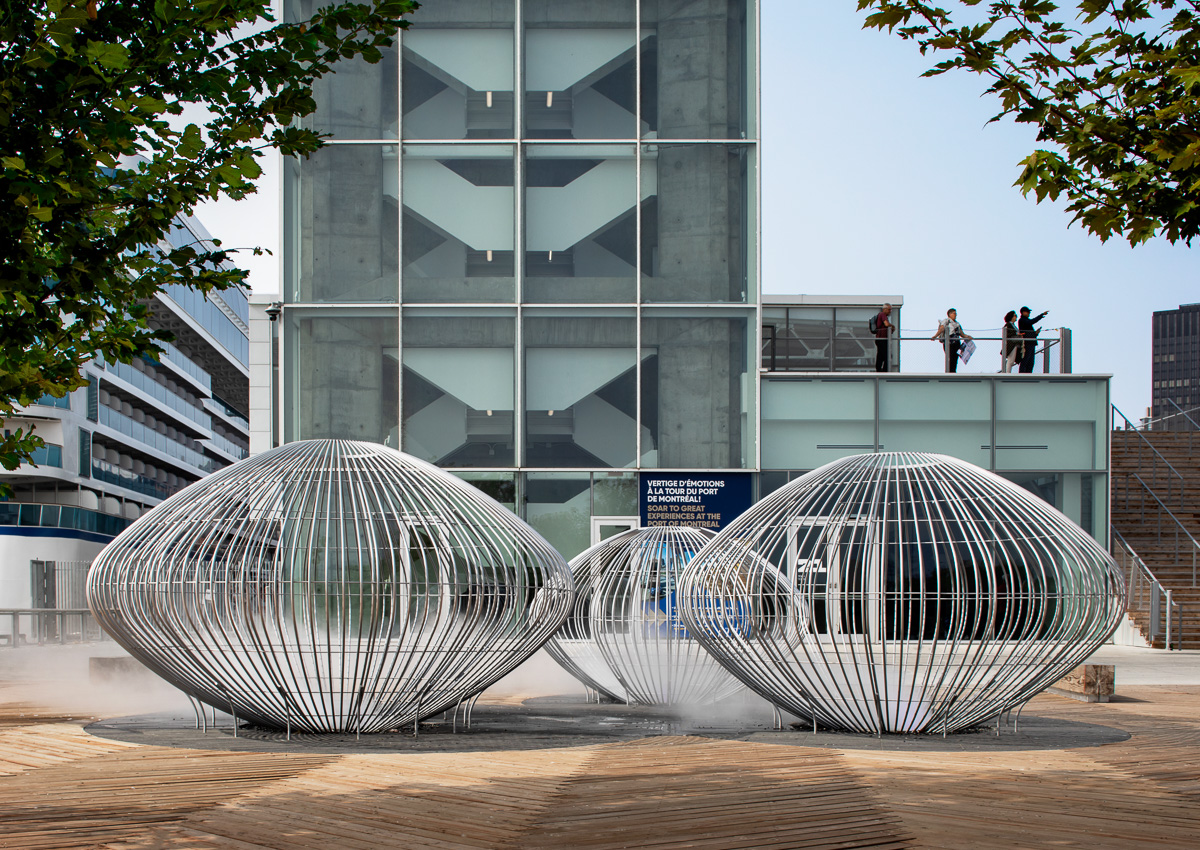
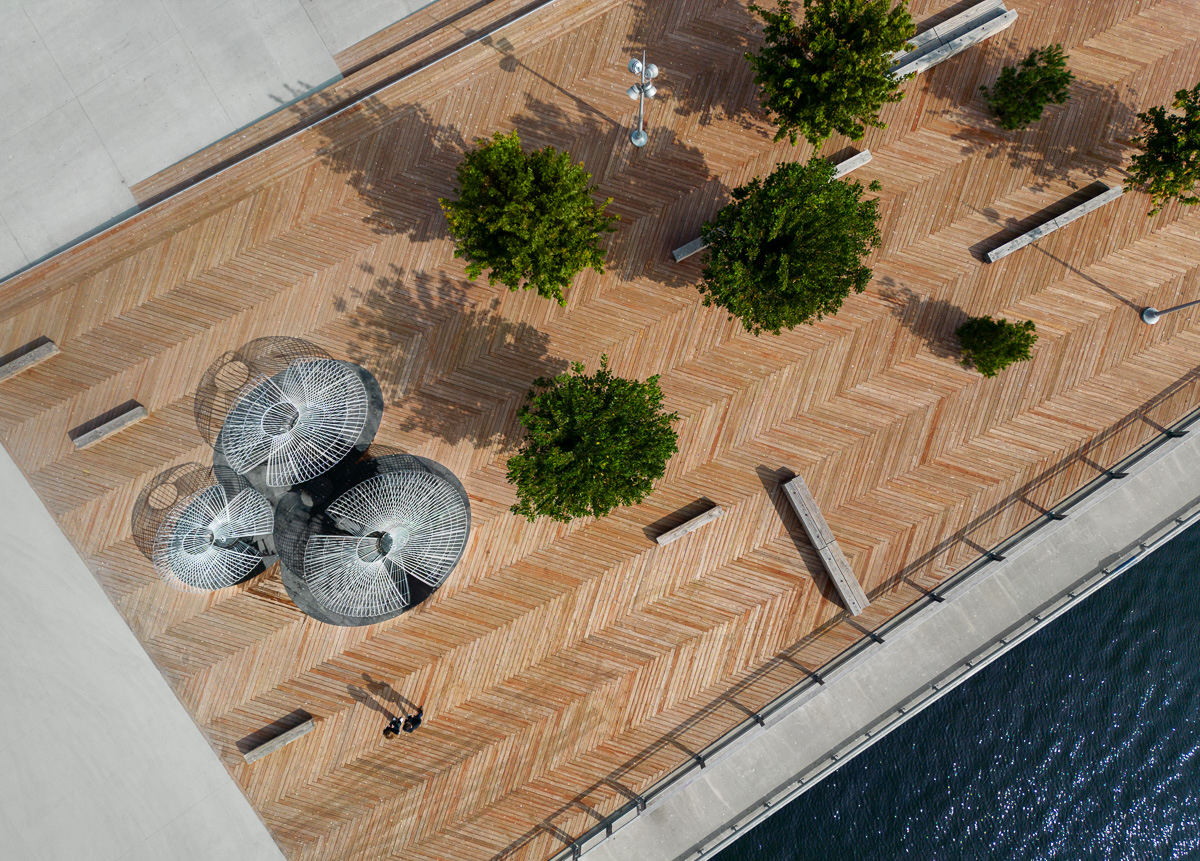
Details
Credits
PREVIOUS ARTWORK

NEXT ARTWORK







Autoportraits
Description
“Autoportraits” invites students and passers-by to engage with the sculptural installation, its surroundings (both built and natural) and each other. A triangular element, sited in a sunken rain garden, soars to a height of 20’. Composed of mirror finish stainless steel plates, offset by mat stainless steel plates at the base, it is outlined along two vertical edges with a thin red line. A circular podium of St-Marc limestone sits directly in front. Embedded with a random arrangement of stainless steel numbers, these 1’s and 0’s represent the binary code that spells ÉTS (École technologie supérieure).
The mirror planes of the triangular element reflect their surroundings – the continually changing sky with sun, clouds, rain or snow; the trees and plantings; the cars, cyclists and pedestrians. The podium offers itself as a platform for students – individually or in groups – to step up and take a photo with their image reflected on the mirrored surface, an affirmation of their engagement to the ÉTS and the natural world.
During evening hours, the base of the sculpture is softly illuminated with white light while the podium is bathed with red. A beam of white light projected onto the podium is activated by a person stepping onto it – and being in the spotlight.
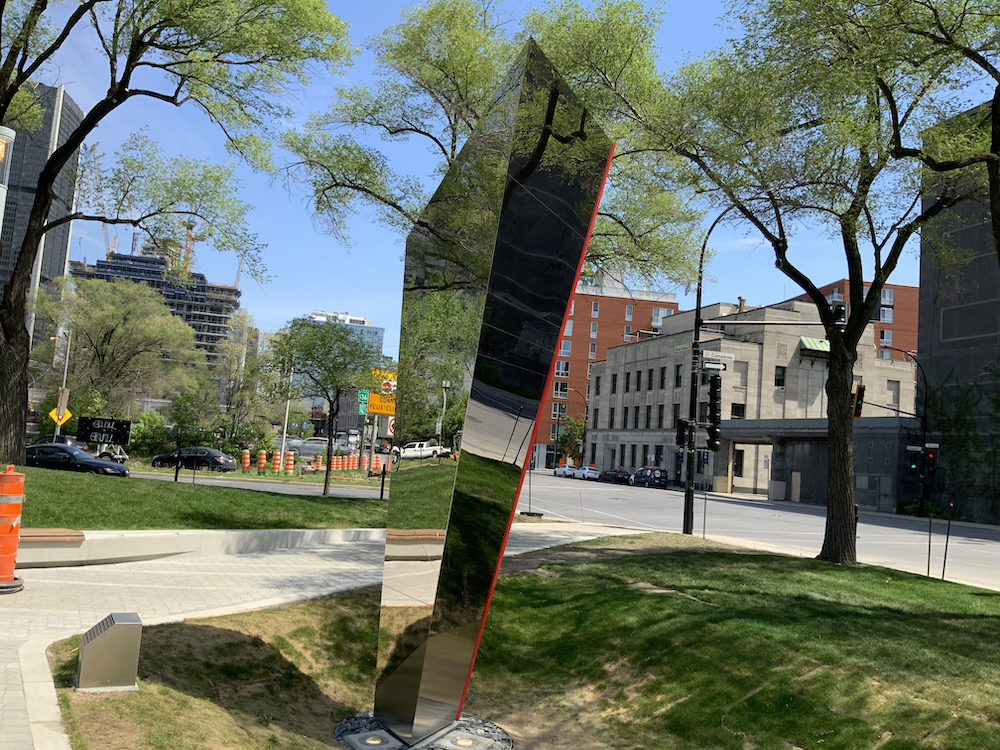
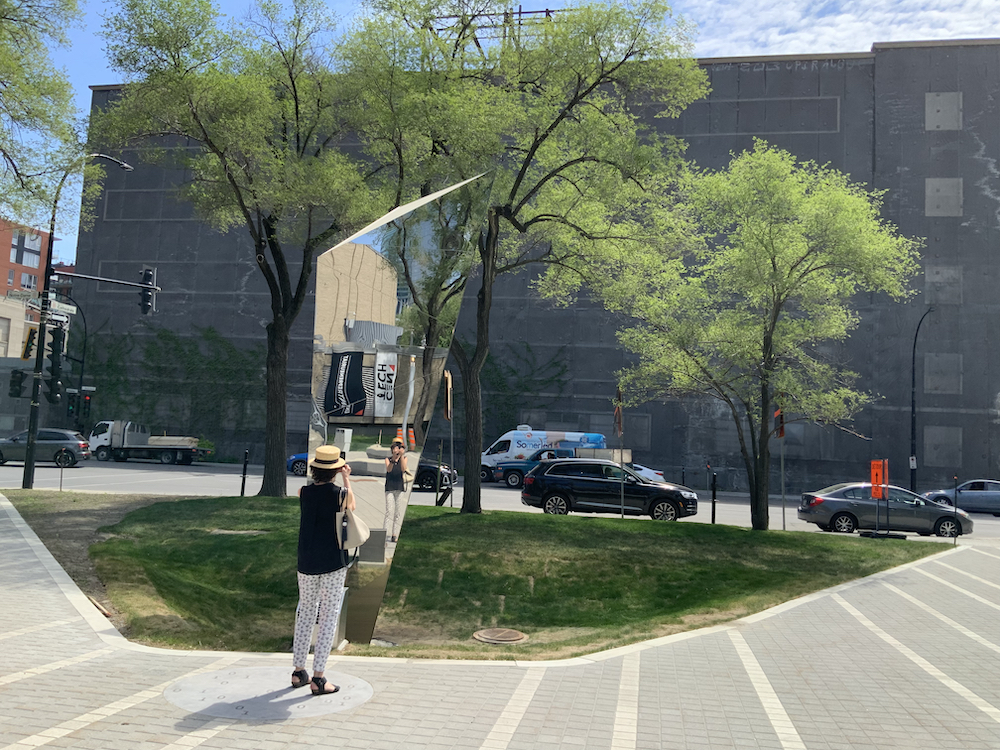
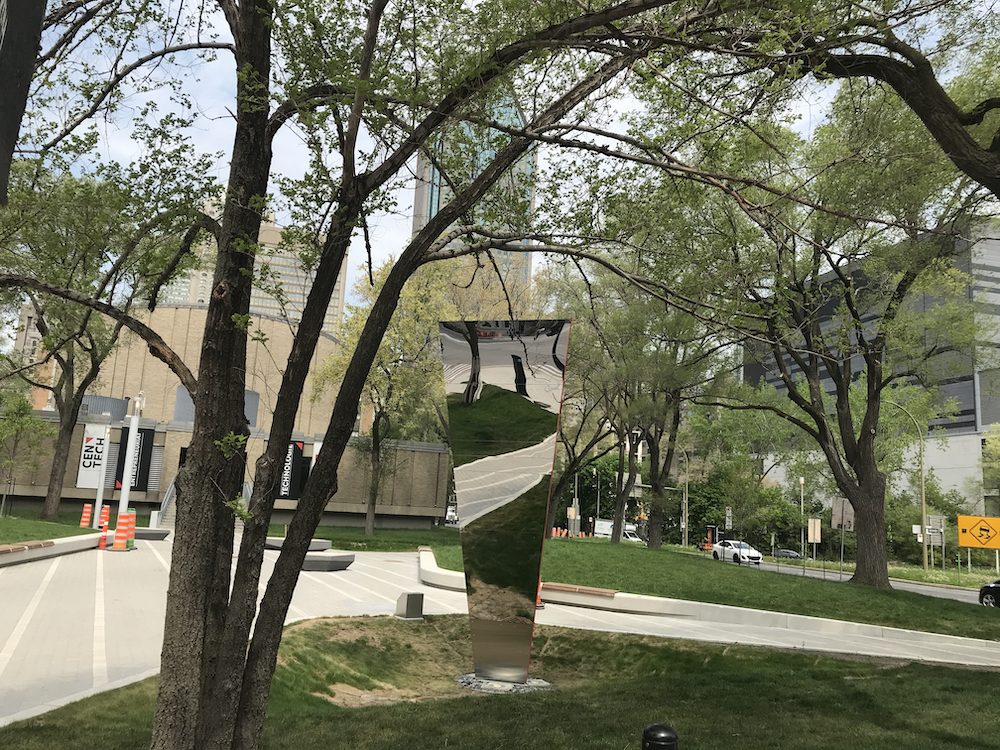
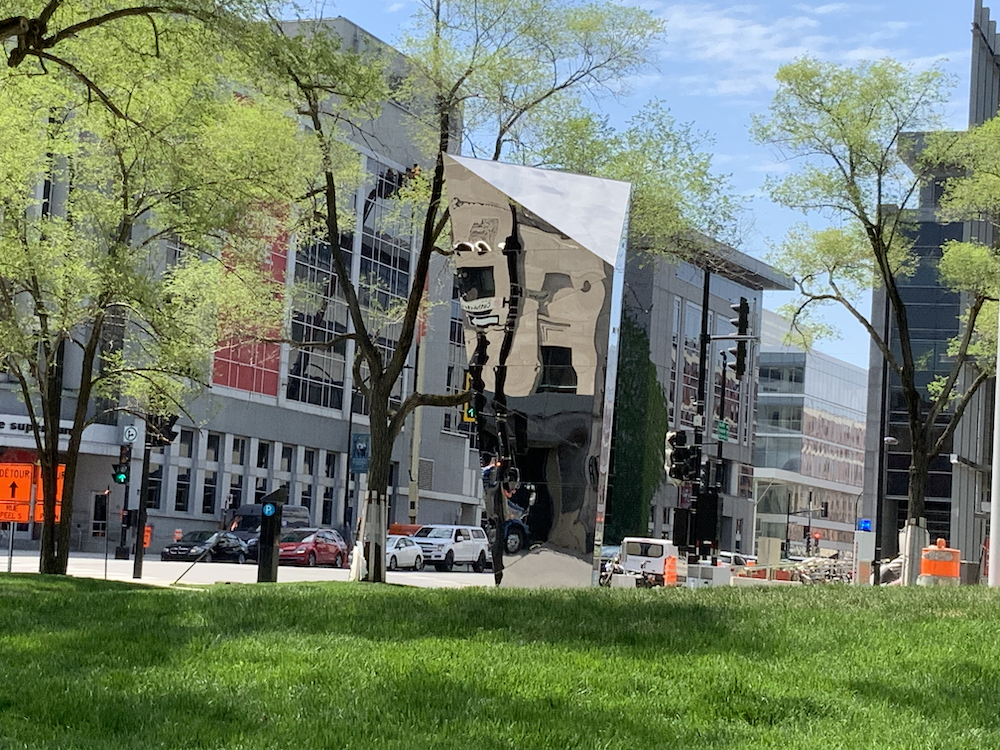
Details
Credits
PREVIOUS ARTWORK

NEXT ARTWORK


Raindrops
Description
Water – the essential element in the treatment of dialysis, so essential for plants and all life forms – is the guiding narrative of this installation. Four sculptural forms are sited through the forested garden of the Hospital Maisonneuve-Rosemont’s Dialysis pavilion.
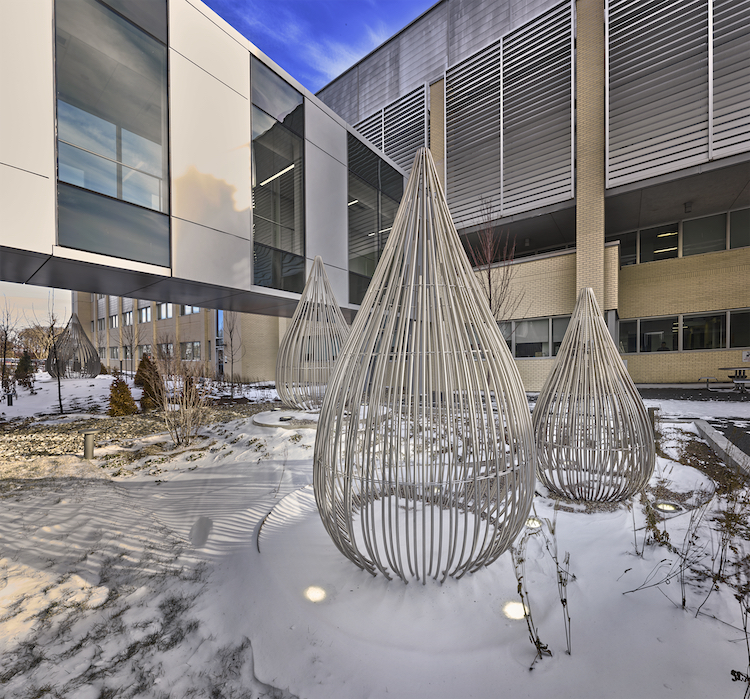
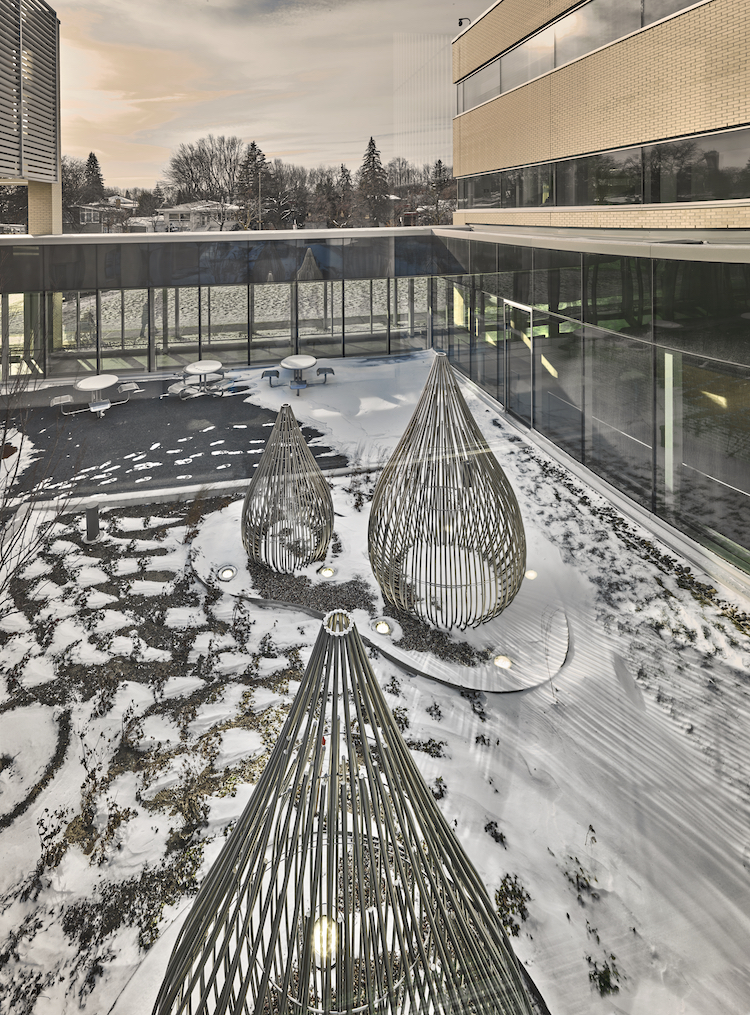

Details
Credits
PREVIOUS ARTWORK

NEXT ARTWORK




Lord Stanley’s Gift
Description
This sculptural installation takes a contemporary approach to the concept of monument. Rather than a traditional structure to be looked at and contemplated, it invites the visitor into the monument to share an important part of the Canadian identity and culture.

A large chaliced form evokes the original Dominion Hockey Challenge Cup gifted by Lord Stanley in Ottawa on March 18, 1892 and the current Stanley Cup as it came to be known. It is the very essence of this cup – a trophy that speaks of hockey and of the passion it incites in its scores of fans, a repository of names and dates documenting each series’ win – that informs the sculptural installation. A thick round of polished matte black granite, across from the Cup, alludes to a hockey puck and offers seating.
Inspired by the hockey rink, the ground surface is poured in place white cement . Thin stainless steel lines crisscross the white ground suggesting skate marks on ice. Thirty-six black granite discs are scattered across the rink, embedded flush in the ground. Each is engraved with the name of a hockey team that made it to the Finals : 16 are matte finish, representing the Challenge Cup era (1893 – 1915); 20 are mirror finished, representing the NHL era from 1915 to 2017.

A website details each team that reached the finals, the number of times and years, the history of the original gift and of Lord Stanley, plus other relevant information.

Details
Credits
PREVIOUS ARTWORK

NEXT ARTWORK




Havre
Description
The McGill University Health Centre (MUHC ) is one of the world’s foremost academic health centres. The new hospital opened in April 2015 at the Glen site, a redevelopment project that created leading-edge facilities in three sites.
Havre was completed in November 2014, the largest of eleven public art commissions spread throughout the new MUHC hospital complex. Sited on the entranceway grounds the objectives included being highly visible to road traffic and to commuters in the nearby trains, drawing people into the landscaped site with its many public gardens, and becoming an iconic symbol for the hospital. While scaled to the immensity of the site Havre also retains a more intimate experience. Conveyed as a “sculptural embrace” it welcomes patients, visitors, staff and passers-by into the artwork through three “doors’, offering a personal experience.
During the day natural light projects patterns of shadows through the artwork, transforming with the hours, days and seasons. During evening hours three sequences each thirty minutes long bathe the artwork in subtle shades of blue / blue-green, colours that evoke both air (sky) and water, elements essential to life.

Details
Credits
PREVIOUS ARTWORK

NEXT ARTWORK





Light Containers
Description
Thousands of perforations compose an image of a flower in each cone. Referencing spy apple blossoms, they speak of the fruit that once grew in nearby orchards. Changing tones of white light illuminate the cones during evening hours. Two cones are sited on a busy city street fronting a condominium tower ; a third cone is sited at the corner, a junction of two streets.

Details
Credits
PREVIOUS ARTWORK

NEXT ARTWORK



Light Container (wood)
Description
The conical-shaped sculpture, its dimensions developed in proportion to the gallery space, rises to a few inches from the ceiling and extends towards the two lateral walls of the room. Its outer shell is formed of long, thick planks of torrefied wood, fixed vertically to a metal frame. Interior light seeps through narrow slits between the planks, and spreads through the top opening of the structure.

Details
Credits
PREVIOUS ARTWORK

NEXT ARTWORK



Rose Wall
Description
The stainless steel sculptural wall defines the edge of the Four Seasons Hotel and Residences’ garden. Climbing roses, a favorite flower in the Victorian era references the neighbourhood’s Victorian buildings and heritage. Translucent clouds of mist emerge from the anodized aluminum grating along the wall’s base. Slowly changing tones of white bathe the wall at night.


Details
Credits
PREVIOUS ARTWORK

NEXT ARTWORK


Saule tortueux / Pin nordique
Description
A gift from the Government of Quebec to the province of Shandong. Jinan, its capital, is one of China’s most famous historical and cultural cities. It is renown for its 72 natural springs, and for the weeping willows that grow along the shores of the lakes they feed.
The large drawings of branches – the curly willow closely associated with Shandong, the pine tree, a familiar emblem of Quebec’s northern landscape – are references both historical and contemporary, affirming a sense of place.


Details
Credits
PREVIOUS ARTWORK

NEXT ARTWORK



Give Peace A Chance
Description
The park is an important heritage site in the heart of the city, its layout originally conceived by Frederick Law Olmsted. The artistic intervention commemorates the 1969 John Lennon- Yoko Ono bed-in here; marks the transition between city and park and the relationship between natural and built elements; references the historic forest and Olmsted’s vision; and creates a space that invites contemplation. The site borders a hairpin turn in the winding path up the mountain’s southern flank. The phrase give peace a chance, from the song written during that event, is carved in relief on stone slabs in forty languages spoken in this city. Rough stone blocks mark the installation entranceway, provide seating and reference the stone of the mountain. Moss and ferns complete the work.




Details
Credits
PREVIOUS ARTWORK

NEXT ARTWORK




Tracings
Description
The sculptural installation references the history of the site as evoked by tracings of wildflowers: the flora that likely grew here at the time of its settlement in what was a pioneer community.


Details
Credits
PREVIOUS ARTWORK

NEXT ARTWORK




Chugach Garden of Light
Description
The installation forms an outline of jagged peaks, recalling the profile of the Chugach mountain range surrounding the city. The tallest pole in each group is encircled with a number cut out of stainless steel, referencing the elevation of one of the range’s peaks.


Details
Credits
PREVIOUS ARTWORK

NEXT ARTWORK



Stripe, Circle, Spiral and Branching Rooms
Description
The 252-acre Center includes historic and contemporary gardens, boardwalks over wetlands, a bird blind, boating excursions and outdoor classrooms. The Center’s predominant aim is the exploration of each person’s role in the stewardship of nature; it serves primarily as an education facility for local residents as well as visiting tourists. Opened to the public in spring 2008, it is certified LEED Platinum.

Working in close collaboration with Louisiana landscape architect Jeffrey Carbo, FASLA, site responsive sculptural installations were incorporated into four garden rooms, resulting in a seamless integration of art and nature. Inspired by forms found in plants the installations are designed to engage both their “rooms” and visitors, offering a unique experience of space and place. In each room, a drawing of a plant detail, cut out of two layers of stainless steel plate, references one of the plants within its site. Benches and screens complete the work, the latter offering students a canvas on which to attach related natural materials in creative ways. As an introduction to collective artwork projects, the installations can teach inventive ways of recycling and an understanding of and respect for nature.


Details
Credits
PREVIOUS ARTWORK

NEXT ARTWORK




Jardin / Forêt
Description
Tall slender tubes flow through an enclosed outdoor space into an exterior entranceway. Sited between two hospital pavilions, the zones are separated by a glazed two-storey glass corridor, offering multiple viewpoints onto the installation.

Details
Credits
PREVIOUS ARTWORK

NEXT ARTWORK




Les graminées du jardin Saint-Sulpice
Description
The installation commemorates Berthe Chaurès-Louard, who introduced the concept of cooperation to Quebec (Canada). She founded the province’s first food co-op in Montreal in August 1938 and went on to establish many other cooperative groups over the years.
The enlarged plant details cutout of the metal represent the produce cultivated and sold on the Island of Montreal at the time. The installation also alludes to the neighbourhood gardens and children’s gardens that sprang up out of a sense of community and spirit of cooperation.


Details
Credits
PREVIOUS ARTWORK

NEXT ARTWORK




Field of Winds
Description
A grouping of mobiles extends across the grassy area in front of the airport building. Their branches of leaves turn slowly with the currents of air, embodying the poetics of wind and flight.
The History Posts were inspired by the story of Mary Weber, who learned to fly here at age 20 and became the fifth woman in Canada to earn a pilot’s licence. Each of the illuminated columns is silk-screened with an archival photograph accompanied by a descriptive text. They line the walkway to the terminal entrance, offering travellers a glimpse of the airport’s milestones since its beginnings in 1929.

Details
Credits
PREVIOUS ARTWORK

NEXT ARTWORK



Willow/Light
Description
The sculpture speaks of our coexistence with nature, expressed through dichotomies of the built and the natural, curved and straight lines, inert and living things, contemporary and traditional art.

Details
Credits
PREVIOUS ARTWORK

NEXT ARTWORK



Storehouse of Names
Description
The abandoned schoolhouse site was chosen for its location and history. Midway between two depopulated farming communities, the empty building and its grounds are used by local residents for meetings and celebrations. The installation’s form suggests a gathering place. It references the juncture of the two small communities, and a kura – a Japanese storehouse for rice. Hundreds of small, black-glazed ceramic bowls line the inner walls of the cedar structure.
Similar in size and shape to a rice bowl held cupped in the hands, each is engraved with the name of a resident or family member.
In the context of the triennial, I worked with a team of ceramic students and gave workshops to residents to produce the bowls. The local residents engraved each bowl with their name or family member. The black glazed bowls are deposited inside the structure, a storehouse of names.


Details
Credits
PREVIOUS ARTWORK

NEXT ARTWORK




Tower of Bowls
Description
Inspired by the lantern-festooned floats of Kyoto’s Gion Matsuri (festival), the sculpture comprises some two hundred bowls perched around an open structure. The precarious equilibrium of the bowls, poised on slender rods, speaks to the nature of fragility and, ultimately, to our own impermanence.
Details
Credits
PREVIOUS ARTWORK

NEXT ARTWORK



Circle of Words, Garden of Thought
Description
The installation is set on the grounds of a community centre in the economically disadvantaged, multicultural Jane-Finch neighbourhood. The themes were defined by the commissioning committee in consultation with the community; one of the goals was to create an outdoor meeting place.

A wide stone bench traces an 18m (60-foot) long arc, the circular movement reinforced by a stand of light columns and birch trees. Narrow lengths of granite alternating with wide bands of river stones form a footpath into the circle. Each granite piece contains a thin channel that collects rain or snow; on dry days, the dark lines formed by the shadowed incisions evoke the ephemeral liquid lines. Small boulders engraved with words such as heritage, trust, friendship and gathering are scattered within the circle and extend outwards through the adjacent wooded grounds.

Details
Credits
PREVIOUS ARTWORK

NEXT ARTWORK



72 Bowls for Fuji
Description
In winter 2001, I photographed a number of my black ceramic bowls in the white snow of the Laurentian countryside. From this, a series of images was printed in large format for an exhibition in Japan, bringing my interventions in the Quebec winter landscape into a very hot and humid Japanese summer. A tea master, after visiting the exhibition, likened the experience of viewing these images to the practice of putting ice cubes in tea during the summer months.
Details
Credits
PREVIOUS ARTWORK

NEXT ARTWORK




La cloche aphone
Description
Inspired by the bronze temple bells of Japan, the sculpture’s dimensions are scaled to the human body. Its exterior is heavily layered with oil and pigment, while the hollow interior is painted matte black. The sculpture was produced during a residency at Est -Nord-Est, Saint-Jean-Port-Jolie.

Details
Credits
PREVIOUS ARTWORK

NEXT ARTWORK


Theatre for Sky Blocks
Description
This commission for an outdoor sculpture park was conceived for a grassy area located between a bicycle path and a waterway. Three columns silk-screened with a photographic image of clouds are aligned in an arc, positioned between two land masses to reveal the water and sky stretching into infinity. Viewed from a bench centred some 30 feet in front of it, the installation blurs the lines between the existing and the imagined.
Details
Credits
PREVIOUS ARTWORK

NEXT ARTWORK


Cæsura
Description
This peace monument was created for Montreal’s 350th anniversary celebrations. Two central stainless steel “doors” rise out of the ground through a granite spiral, opening onto a garden. 12,700 war toys, donated by children as a gesture for peace, are buried underneath. Some have their silhouettes cut out in brass plates, inlaid in the spiral and left to be overgrown with weeds. Thirty are cast in bronze, scattered across the spiral base and adjacent lawn. A central axis links the garden on one side with three benches on the other, where a semicircular planting of bushes creates an intimate alcove. Caesura is dedicated to all the individuals engaged in the pursuit of peace.


Details
Credits
PREVIOUS ARTWORK

NEXT ARTWORK




Sekibutsu-gun
Description
Thirty-five “stones” are arranged in seven rows on a structure graduating in height. Inspired by a sekibutsu-gun (stone/Buddha/group) I had photographed in the Daitoku-ji temple grounds in Kyoto, Japan, these “stones” are made of clay. The vague images of human forms sculpted in relief are rubbed with grey/green powders and highlighted in gold. Placed at the end of a 25’ (7,6m) long black reflecting pool, the water’s reflection completes the circular image. A small bench centred in front offers the optimum place for viewing.
Details
Credits
PREVIOUS ARTWORK

NEXT ARTWORK




















